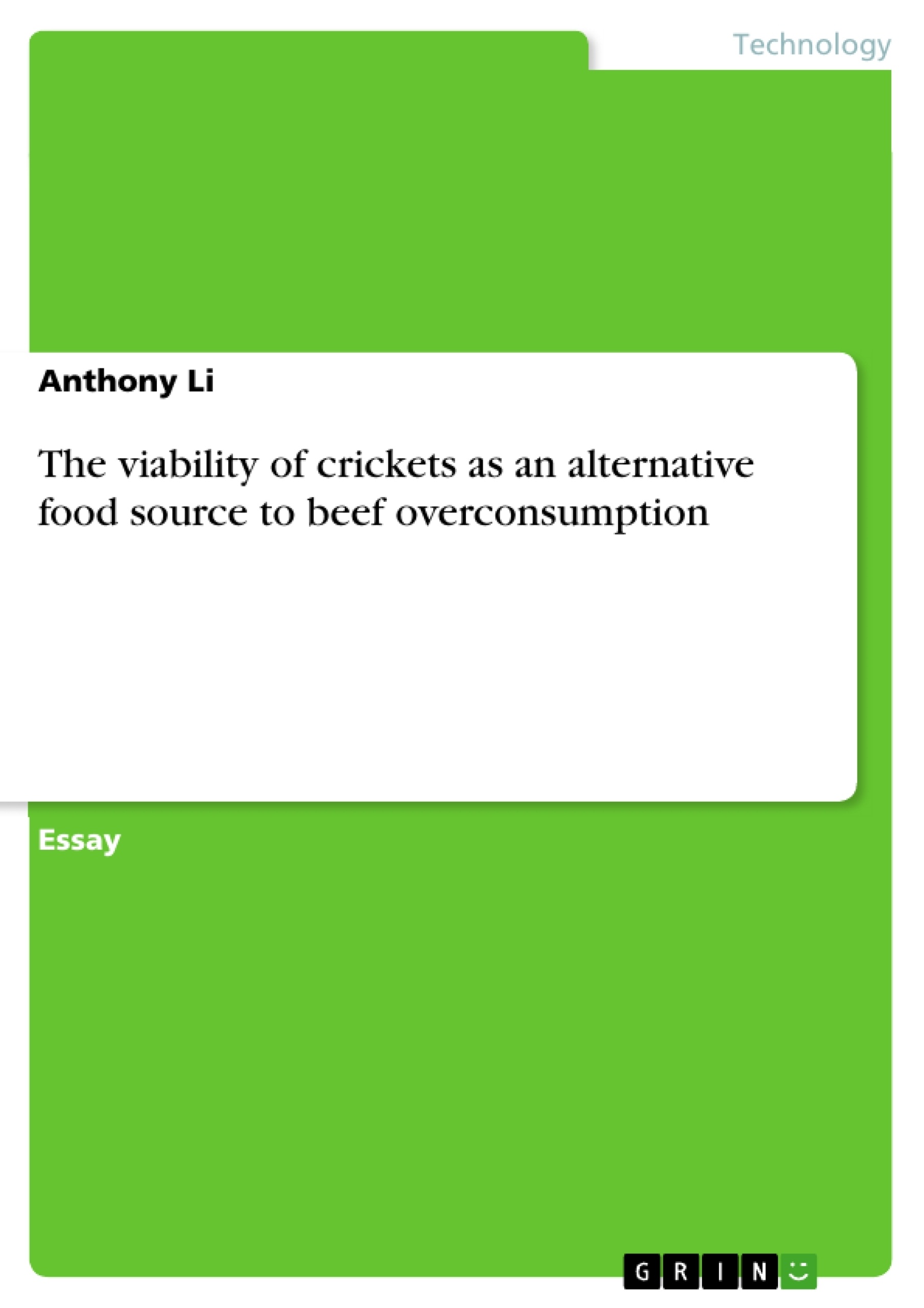Among some of the leading current global issues is world hunger. Many attempts have been made at mitigating or even solving the problem, but progress has been slow. Recently, there has been increasing awareness about eating insects, known as entomophagy, to solve world hunger. In 2008, the Food and Agriculture Organization of the United Nations published a report discussing how insects could be the solution to achieve food and feed security. I found the report intriguing, noting that entomophagy now had considerable credibility with the United Nations having thoroughly examined the notion. With entomophagy, I noticed not only global applications with hunger and environmental issues, but also potential local applications in nutrition and economics. I narrowed down the enormous topic of entomophagy to two organisms: the cricket and the cow. I thus investigated the question: Through the lenses of biology and environmental systems, are crickets viable as a solution to counteract the overconsumption of beef to prevent a potential global hunger epidemic?
With different avenues of research, I decided to separately study biology and environmental systems. I found the biological aspect most interesting, but I also recognized the importance of the environmental factor. Biological elements were examined in the first half of the investigation, with focus on nutrition, health risks and efficiency comparisons. Environmental systems elements were covered in the second half by looking at emissions, ecological footprint and impact on nearby ecosystems. Overall, there were noticeable benefits of introducing crickets into the global food industry as a substitute to beef. Not only could they rival beef in nutrition, but also were more efficient and posed little human health risk. In addition, the emissions and ecological footprint imposed by crickets were considerably lower than those of beef, with minimal potential impact on nearby ecosystems.
Inhaltsverzeichnis (Table of Contents)
- Introduction
- Body
- Biological Elements
- Nutrition
- Health Risks
- Efficiency Comparison
- Environmental Systems Elements
- Emissions
- Ecological Footprint
- Impact on nearby Ecosystems
- Biological Elements
- Conclusion and Evaluation
Zielsetzung und Themenschwerpunkte (Objectives and Key Themes)
This extended essay explores the viability of crickets as an alternative food source to combat the overconsumption of beef and address the potential global hunger epidemic. The essay examines the topic through the lenses of biology and environmental systems, aiming to determine if crickets offer a sustainable and efficient solution.
- Nutritional value and health implications of crickets versus beef.
- Environmental impact of cricket farming compared to cattle ranching, including emissions, land use, and ecological footprint.
- Efficiency and sustainability of cricket production in comparison to beef production.
- The potential of entomophagy (insect consumption) as a sustainable food source.
- The cultural and societal perspectives surrounding insect consumption.
Zusammenfassung der Kapitel (Chapter Summaries)
The introduction lays out the research question and the context of the global hunger epidemic, emphasizing the need for sustainable food solutions. It highlights the inefficiencies and environmental impacts of beef production, leading to the exploration of insects as a potential alternative.
The first section, "Biological Elements", delves into the nutritional profile of crickets, comparing their protein and essential nutrient content to beef. It also examines potential health risks associated with cricket consumption. Finally, this section explores the efficiency of cricket production, comparing it to the resource requirements of beef farming.
The second section, "Environmental Systems Elements", focuses on the environmental impacts of cricket and beef production. It analyzes the greenhouse gas emissions generated by each food source, their respective ecological footprints, and their potential impact on surrounding ecosystems.
Schlüsselwörter (Keywords)
This extended essay delves into key concepts such as entomophagy, sustainability, nutritional value, environmental impact, resource efficiency, and global hunger. It specifically explores the potential of crickets as an alternative food source to beef, examining the biological and environmental systems involved in each production method.
- Arbeit zitieren
- Anthony Li (Autor:in), 2016, The viability of crickets as an alternative food source to beef overconsumption, München, GRIN Verlag, https://www.grin.com/document/355212



